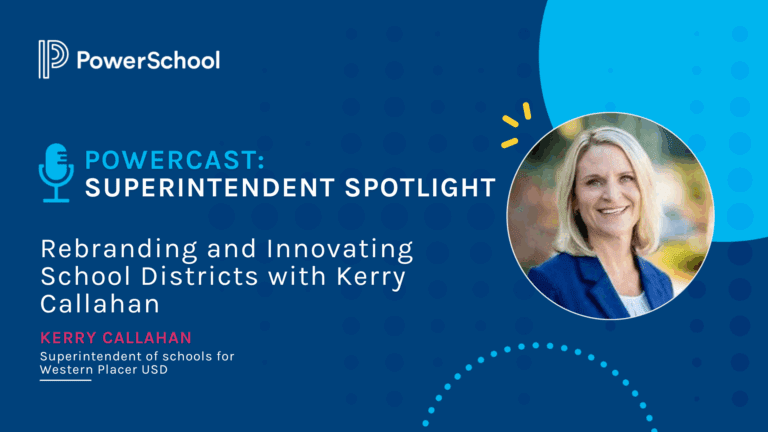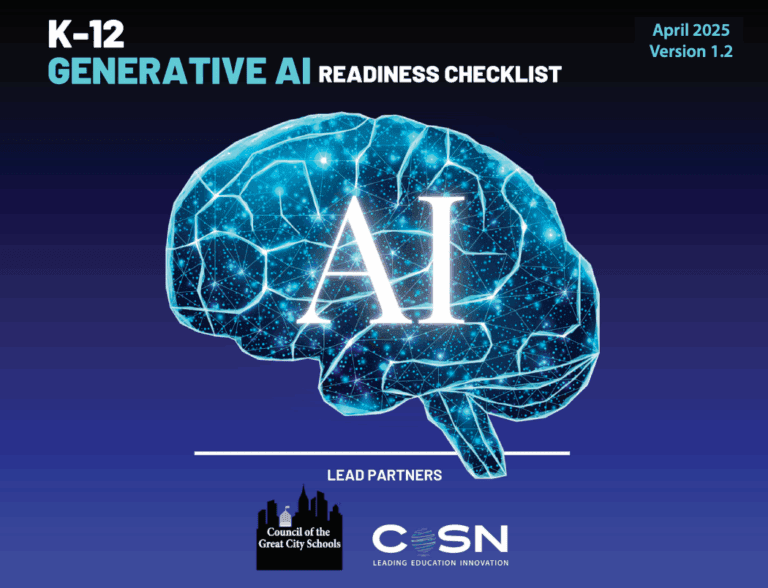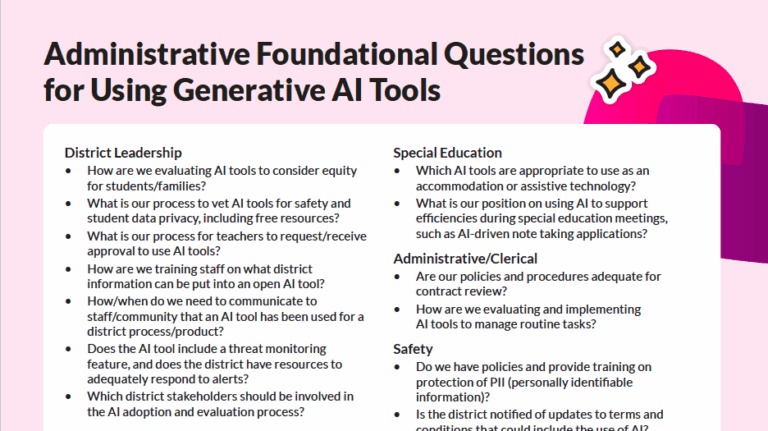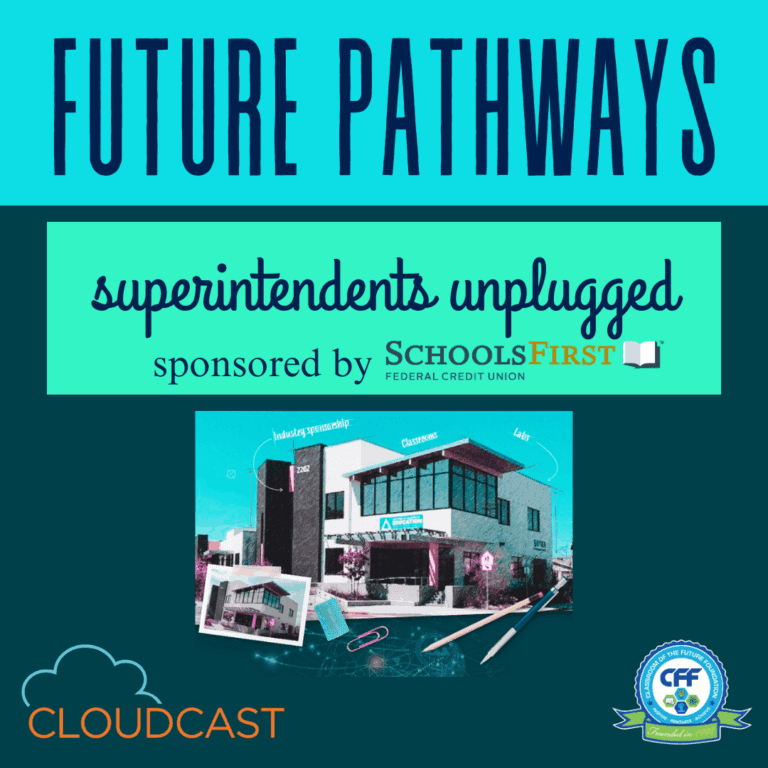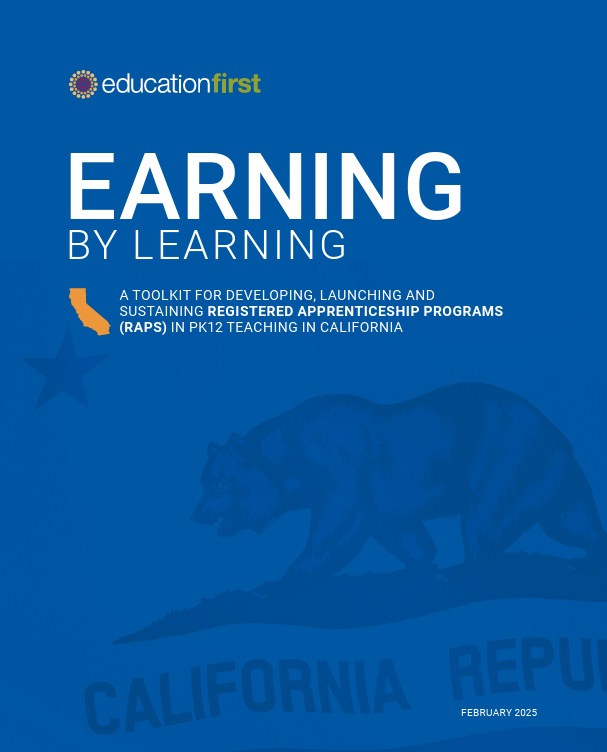
The following article was written by Dr. Kelly Fountain, director of Early Learning at Lancaster School District.
Several years ago, California initiated a Universal Prekindergarten Program to provide access to a play-based learning year prior to kindergarten entry for all 4-year-old children across the state. This new initiative reached full implementation in the fall of 2025, where any child in the state can enroll at their local education agency if they have reached their fourth birthday by Sept. 1. Districts across the state have put together an implementation plan and received money to set up their UTK programs to comply with a re-envisioned UTK. Although this year UTK is fully implemented under the UPK umbrella, much confusion remains about who to enroll, how to provide a high-quality program, and why an administrator at a school site should spend so much time working on just this one grade level. There is still much conversation about the cost of implementing a program that requires a lower ratio and specific credentialing requirements. School districts will need to find common ground in UTK implementation if they are to reap the reward for their return on investment (Heckman, 2012) in California’s historic investment in this new grade level.
In the writing of the UTK Plan, districts were asked to respond to meeting the five focus areas. These included
- vision and coherence,
- community engagement and partnerships,
- workforce recruitment and professional learning,
- curriculum, instruction, and assessment, and
- LEA facilities, services, and operations.
While districts wrote to each area, many did so without consulting an early learning expert which in many cases ran programs in their own districts. Decisions were made with inaccurate information about the unique needs of early learning which often resulted in higher job demands on the staff in the classrooms. School site administrators now charged with overseeing these programs without fully understanding what this new grade-level even meant in their overall scope of responsibility.
There are several reasons why school sites and district administrators need to pay attention to what is happening with these 4-year-olds. This article aims to elevate this new approach to UTK and provide people in the position to make decisions about this grade-level with a new pedagogical focus and realistic expectations for the staff and students in these classes. School districts should focus on reducing ratio, hiring qualified staff, and leveraging multiple funding sources to provide a developmentally appropriate learning environment that meets the same high-quality measures that are provided to children in the wide variety of early childhood education options available to families across the state. There are five important things to consider in this space.
5. Administrators of early education programs need to understand early childhood development (Lieberman, 2019).
In the play-based approach to learning, children need adults that understand and support how they learn. This means the classroom is grounded in developmentally appropriate practice and provides children with opportunities in independence and autonomy in the work of play. Teachers become facilitators of play to support early learning standards as children guide their own learning. In this space teachers need administrators that understand the foundational skills being developed when children are at the sensory table, playing with playdough, or cutting a piece of paper into a million pieces on the floor. The classroom will be noisy and look chaotic while kids are busy in play. The teacher team needs to know that when their administrators observe them, they understand and support the work of intentional play. Feeling supported by the people that they report to builds the confidence needed to design intentional learning environments each day for children.
4. Administrators can support the connection of early educators to the larger school campus (Leithwood et al., 2004).
Early learning looks different and is often criticized for the nature of its play as babysitting or childcare. This pervasive opinion about the essential work that early educators do can leave them feeling isolated and unimportant in the larger school community. Administrators can support the work being done to build global citizens through social emotional learning in the UTK classroom by supporting the work and creating opportunities for articulation among teachers in PK,UTK, and K. As children move through the grade levels, they will benefit from teachers who understand the hard work that is done in early learning as a foundation when they enter kindergarten. Supporting this work and uniting the early learning staff in school-related activities can support teacher teams to feel like they are part of a bigger purpose. Understanding the connection between The California Preschool/Transitional Kindergarten Learning Foundations (PTKLF), the DRDP assessment, and the Common Core Kindergarten Standards can help teachers work together to create alignment as children in early learning work to become kindergarten ready. This type of support can help teachers feel connected to their work (Schaack et al, 2020), and the school campus.
3. Early Learning Administrators need instructional competency in early learning (Nicholson et al., 2022).
Administrators of UTK need an understanding of developmentally appropriate practice in early learning to support teachers to design and build instruction that meets the individual and developmental needs of each child in an inclusive early learning setting. Administrators should become competent in what that looks like in a child-centered environment. They should be able to support teachers to design learning around the needs of young children. This includes uninterrupted chunks of time in unstructured play with materials that meet the needs of the children. This may mean shifting play time into learning time outdoors and supporting additional staff on site with the fundamentals of child development. This may necessitate a rich outdoor play space where appropriate materials are available to children and mindset shift away from the idea of recess and toward an idea of structured play outside. Administrators should support teachers to provide instruction in a non-punitive environment that considers diversity, equity, and inclusion of all children. This approach supports the teacher team and support/inclusion personnel with foundational social emotional learning training to determine what is age appropriate behavior and what are developmentally appropriate strategies to provide young children.
2. Administrators should understand the unique social and emotional development needs of early learners.
Building self-regulation in young children is hard. Children need systematic instruction in learning how to be in a space with so many other kids. They need support in understanding and naming their feelings. They need caring adults who allow them to make mistakes as they learn to regulate their big emotions in a safe space. They need administrators who understand that this is incredibly hard work for teachers in this age group. They need administrators who provide their teachers with the training, tools, and staff necessary to manage as many as eight conflicts a minute in early education. They need administrators who understand that hitting and not wanting to go to group time is typical development. Children need time to learn the expectations without being told family will be called, you will be suspended, or UTK isn’t for you. For many families sending children to UTK, this may be the first time away from home. They need administrators who understand the challenges of learning the expectations in a busy class and what that might mean to their child’s daily experience. Administrators need to prepare themselves and gain the knowledge needed about social-emotional development in early learning so they can appropriately support their teachers to provide systematic teaching of self-regulation in the play based environment.
1. Administrators in early learning need to understand and appreciate families as the child’s first teacher and partner with families to benefit the whole child.
Family is the key to the whole-child approach. Building a relationship with the family supports the child’s foundational readiness for lifelong learning. Working together and communicating with the family will support the child to feel safe and provide them the opportunity to build relationships with the teachers. When children feel safe they are able to develop social emotional awareness which sets up all other learning domains. Including families in the UTK space creates partnerships in the school community to build strong relationships for the entire school.
If you are a school district administrator who is now charged with the oversight of UTK, find the early learning expert in your district or the community. Invite them into the conversation and partner across the system to provide a high-quality learning environment for your district’s 4-year-olds. Lean into their expertise regardless of the certificate/classified status and be willing to think outside the box. This grade looks different, and has unique needs, which means a successful implementation will challenge the status quo, and that will certainly be different.
References
Fountain, K. (2024). The Impact of Job Demands and Personal Resources on Teacher Retention in Early Childhood Education. Grand Canyon University.
Heckman, J. J. (2012). Invest in early childhood development: Reduce deficits, strengthen the economy. The Heckman Equation, 7(1-2), 1-2.
Leithwood, K., Seashore, K., Anderson, S., & Wahlstrom, K. (2004). Review of research: How leadership influences student learning.
Nicholson, J., Maniates, H., Yee, S., Williams, T., Ufoegbune, V., & Erazo-Chavez, R. (2022). Principals as early learning leaders: Effectively supporting our youngest learners. Teachers College Press.








